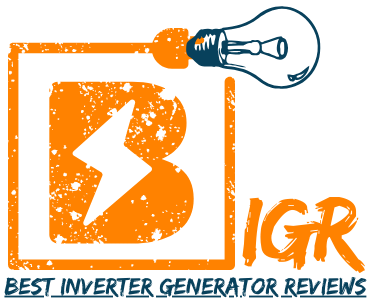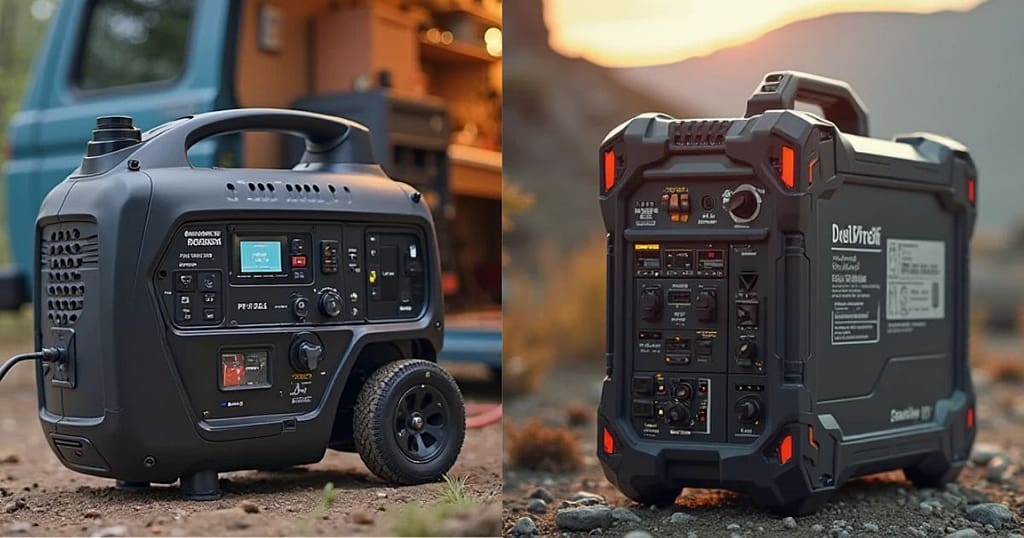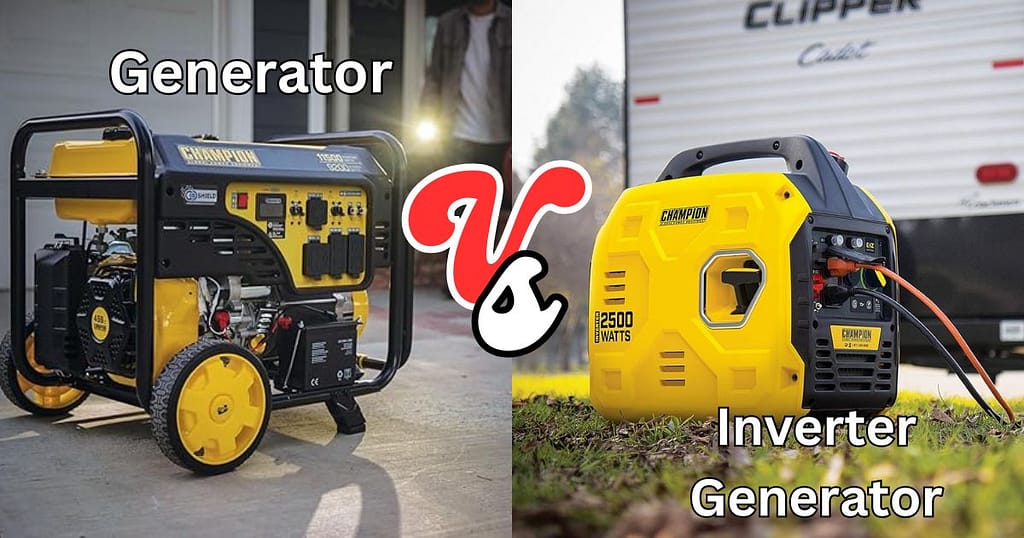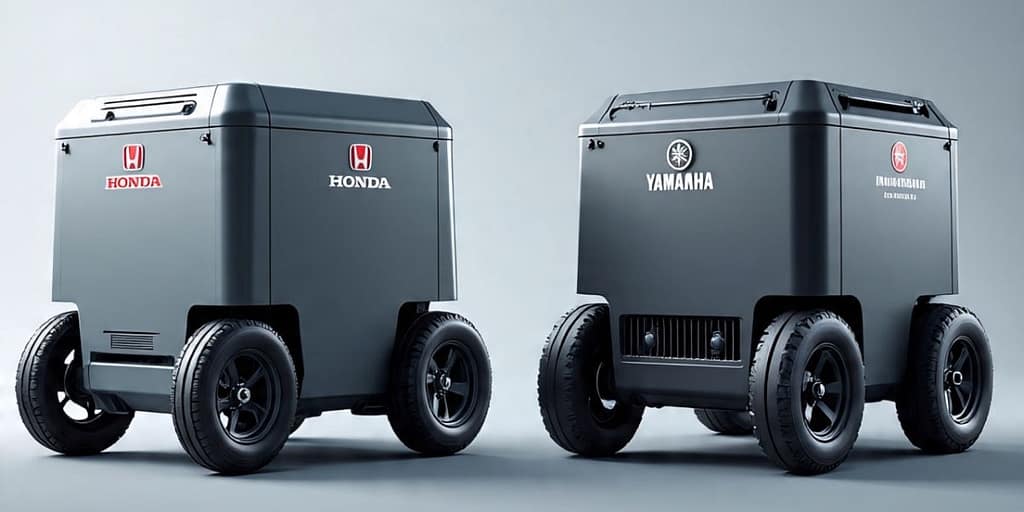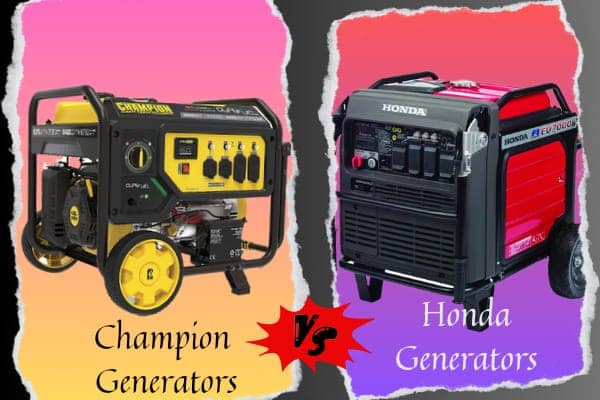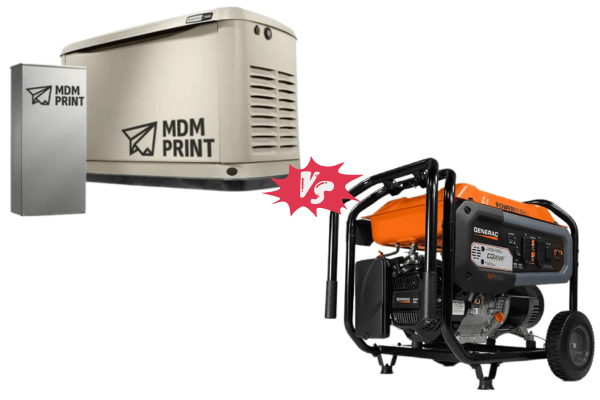When the power goes out, or when you’re far from an electrical grid, having a reliable source of electricity becomes crucial. Two of the most popular options today are inverter generators and power stations (also known as portable power stations or solar generators). While both provide portable power, they work in very different ways, and choosing the right one depends on your specific needs.
This guide will take a deep dive into how these (Inverter Generator vs. Power Station) two power solutions compare, their strengths and weaknesses, and which one might be the best fit for your lifestyle—whether you’re preparing for emergencies, planning a camping trip, or working on a remote job site.
Understanding How Inverter Generators and Power Stations Work
What is an Inverter Generator?
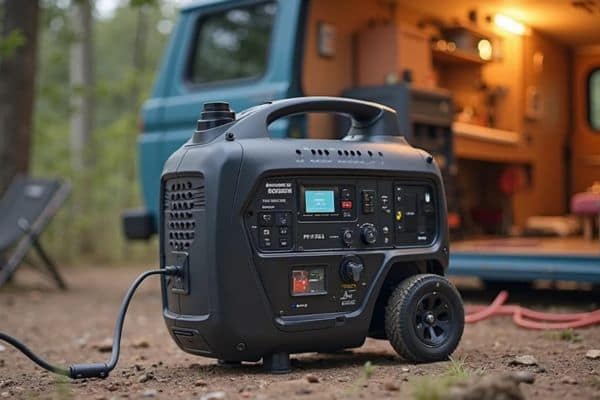
An inverter generator represents the next evolution in portable power generation, creating electricity through a sophisticated three-step conversion process:
First, it generates standard alternating current (AC) power similar to conventional generators. Then, it transforms this electricity into direct current (DC), before finally converting it back to refined AC power that’s safe for sensitive electronics. The key advantage lies in this multi-stage conversion – it eliminates power fluctuations that could damage laptops, smartphones, or medical equipment while operating more efficiently than older generator models. Unlike their predecessors, modern inverter generators automatically adjust their engine speed to match power demand, resulting in better fuel economy and quieter operation.
This innovative design makes them ideal for powering delicate electronics during camping trips, outdoor events, or home backup situations where clean power is essential. The three-phase conversion process essentially acts as a built-in power conditioner, providing electricity that’s as stable as what you’d get from a wall outlet. You may check Best Inverter Generators for Van Life & Off-Grid Living.
By incorporating this smart technology, inverter generators bridge the gap between conventional gas-powered generators and the sensitive electronics we rely on daily, offering portable power without the risk of damaging our devices.
What is a Power Station?
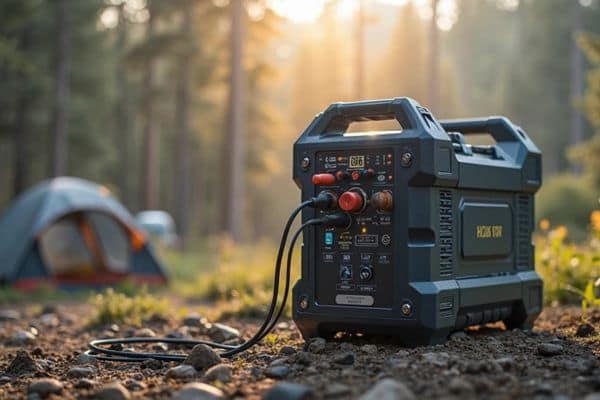
A power station, on the other hand, is essentially a large rechargeable battery pack with built-in outlets. Instead of burning fuel, it stores electricity in a lithium-ion or other battery type and delivers power through AC outlets, USB ports, and DC outputs.
Power stations can be recharged in several ways:
- Plugging into a wall outlet at home
- Using solar panels (for off-grid recharging)
- Connecting to a car’s 12V socket while driving
Because they don’t have an engine, power stations are completely silent and produce no fumes, making them safe for indoor use. However, their runtime is limited by their battery capacity, and they generally can’t handle as much power as an inverter generator.
Key Differences Between Inverter Generator vs. Power Station
1. Power Output and Runtime
One of the biggest differences between these two devices is how much power they can provide and for how long.
- Inverter generators typically range from 1,000 watts to 7,000 watts, meaning they can easily power large appliances like refrigerators, microwaves, and even central air conditioning in some cases. Since they run on fuel, their runtime is unlimited as long as you have gasoline or propane.
- Power stations usually offer between 300 watts and 3,000 watts, which is enough for phones, laptops, lights, and small appliances like a mini-fridge or a CPAP machine. However, once the battery is drained, you’ll need to recharge it, which can take several hours unless you have solar panels.
Winner for High Power Needs: Inverter Generator
Winner for Short-Term, Quiet Power: Power Station
2. Noise Levels
Anyone who’s spent time around a conventional generator understands their notorious reputation for noise pollution. These mechanical workhorses produce a constant, thunderous roar that can drown out conversations and disrupt peaceful environments. The relentless mechanical clatter and engine vibration create an auditory assault that’s impossible to ignore, often forcing users to raise their voices just to be heard nearby. Inverter generators are much quieter than old-style generators, but they still produce noise—typically between 50 and 70 decibels, which is similar to a loud conversation or a dishwasher running.
Power stations, since they have no engine, are completely silent. This makes them perfect for:
- Camping trips (no disturbing wildlife or other campers)
- Indoor emergency backup (apartments, RVs, or medical devices)
- Outdoor events where noise is a concern
Winner for Quiet Operation: Power Station
3. Portability and Weight
If you need to move your power source around, weight matters.
When it comes to portability, inverter generators present some physical challenges due to their substantial build. These power units typically tip the scales anywhere from 50 pounds for compact models up to a hefty 150 pounds for more powerful versions – equivalent to carrying multiple loaded suitcases or a medium-sized appliance. Their considerable mass stems from their internal combustion engines, fuel tanks, and robust metal frames designed to withstand rugged use.
This substantial weight creates real-world handling difficulties that users should consider. While manufacturers often include wheel kits for easier transportation, maneuvering these generators over uneven terrain, up stairs, or into vehicles can still prove physically demanding. The bulkiness becomes particularly noticeable when compared to modern battery-powered alternatives, making inverter generators less than ideal for situations where easy mobility is a priority.
The weight distribution also affects storage considerations – these units require dedicated space in garages, sheds, or truck beds rather than being easily tucked away like their lighter counterparts. For users who need to frequently relocate their power source or have limited storage capacity, the physical dimensions and mass of inverter generators present significant practical limitations that should factor into purchasing decisions.
Power stations are much more compact, with some models weighing as little as 5 pounds (for small units) up to 50 pounds for high-capacity ones.
Winner for Easy Transport: Power Station
4. Fuel vs. Battery: Maintenance and Environmental Impact
Another major difference is how they are powered and maintained.
- Inverter generators require fuel, meaning you’ll need to:
- Store gasoline or propane safely
- Perform regular maintenance (oil changes, air filter cleaning, spark plug checks)
- Deal with exhaust fumes and carbon monoxide risks (never use indoors)
- Power stations run on batteries, so they:
- Need no fuel, just recharging
- Require almost no maintenance
- Produce zero emissions, making them eco-friendly
Winner for Low Maintenance & Eco-Friendliness: Power Station
Which One is Best for Your Needs?
When Should You Choose an Inverter Generator?
- Heavy-duty power is required – think refrigerators, air conditioners, or construction tools
- You’re preparing for extended outages that could last several days or longer
- You’ll be operating in open outdoor spaces where ventilation isn’t an issue
- Continuous operation is critical, and you can maintain a fuel supply
When Should You Choose a Power Station?
- Quiet performance matters – ideal for campsites, bedrooms, or medical equipment
- Easy transport is a priority – perfect for tailgating, RV trips, or emergency kits
- You want to avoid fuel hassles – no gasoline storage or engine maintenance needed
- You plan to harness solar energy for eco-friendly, off-grid recharging
The right choice ultimately depends on your specific power requirements and how you intend to use it. Consider both your immediate needs and long-term usage scenarios before deciding.
Can You Use Both Together?
Some people opt for a hybrid setup—using a power station for daily quiet power and keeping an inverter generator as a backup for high-demand situations. This dual-system approach gives you complete power versatility:
- Silent, clean energy for most needs
- High-power backup when required
Final Thoughts: Making the Right Decision
- If you need heavy-duty, long-lasting power and don’t mind some noise and maintenance, an inverter generator is the way to go. You may check the AIVOLT 10000 Watt Inverter Generator.
- If you want quiet, portable, and eco-friendly power for shorter durations, a power station is the better choice.
Still unsure? Ask yourself:
- What devices do I need to power? (Small electronics vs. large appliances)
- Where will I use it? (Indoors, outdoors, camping, job sites)
- How long do I need it to run? (A few hours vs. several days)
By considering these factors, you’ll be able to choose the best option for your needs.
What’s Your Experience?
Have you used an inverter generator or a power station before? Which one worked better for you? Share your thoughts in the comments—your experience could help others make the right choice!
And if you found this guide helpful, feel free to share it with friends or family who might be deciding between these two powerful solutions.
